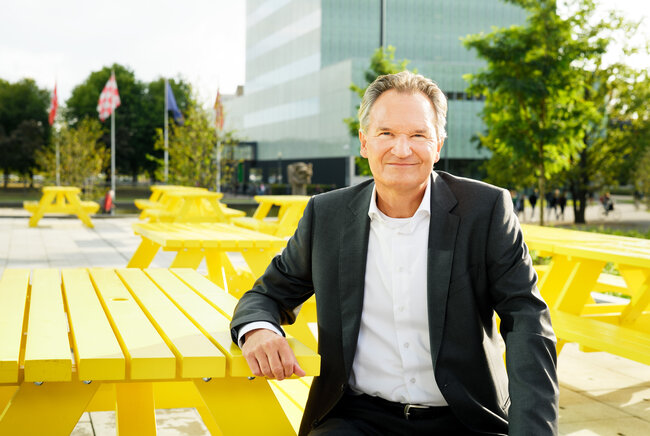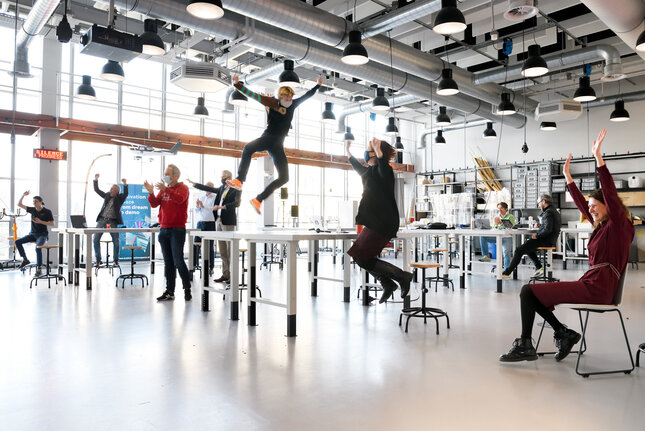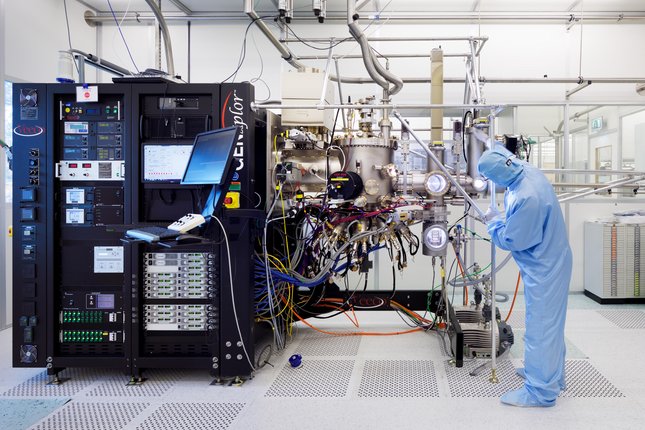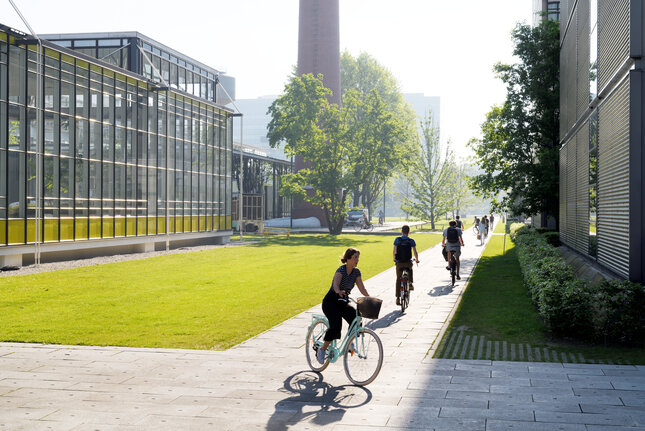Talent and excellence, that's what it is all about
Talent remains the number one value in TU/e's strategy towards 2030. Additionally, the university plans to intensify yet further the cooperation with the Brainport region.

With the new Institutional Plan 2025, TU/e is outlining its priorities for the near future. Talent remains our number one value, says Executive Board President Robert-Jan Smits: “To attract the best students and researchers, we shall need to offer the best education, the best research and the best facilities. Additionally, we are going back to our roots and our cooperation with the Brainport region will be ramped up.” This week the Institutional Plan was submitted to the Ministry of Education, Culture and Science.
“Some years ago TU/e formulated its long-term strategy, Strategy 2030. Now, for the coming years, we have fleshed this out with the Institutional Plan 2020-2025,” explains Robert-Jan Smits. “But it is much more than an elaboration. Since Strategy 2030 was drafted, the world has been hit by the COVID-19 pandemic. As a result, for example, we've seen an acceleration in digitalization. And we are seeing the effects of the pandemic also impacting other facets of the university. The new plan responds to this. Moreover, we have given greater prominence to sustainability and global warming, which are becoming increasingly urgent.”
In the Institutional Plan 2020-2025 talent, cooperation and resilience remain very much the three spearheads of the university's strategy, with talent most highly valued. “It's all about talent. We can maintain our position as an internationally leading university only if we are able to attract the best students, researchers and employees.”

TALENT: INNOVATIVE EDUCATION
For the Talent component a great many concrete steps have already been taken: “To attract the best students, you must offer highly innovative, high quality and flexible education. This is abundantly available by way of Challenge-Based Learning (CBL) at the innovation Space, the Bachelor College and the Graduate School, and to an increasing degree by way of Blended Learning. Last month further confirmation of the quality of our challenge-based education within the innovation Space came with the winning of the main prize of the Dutch Higher Education Awards,” says Smits by way of illustration.
“Whenever I visit companies in the Brainport region, I hear that the engineer of the future must be good at four things: solving problems, working in teams, communicating, and maintaining a thorough knowledge of their discipline. The very talents we instill in our students.”

Talent: research institutes and state of the art facilities
“If we want to attract the best researchers, we must be active in the 'happening' fields. We are doing this within the discipline in the departments and with our institutes, where work that crosses the boundaries of our departments is being done on artificial intelligence (EAISI), the storage of renewable energy (EIRES) and on complex molecular systems (ICMS). In September we are launching our fourth institute, which will concentrate on photonics and quantum technology. A group of excellent scientists is hard at work refining the plans for this institute.”
Similarly, the university's research infrastructure plays an important role in our ability to attract elite academics. “The top echelon of talent is keen to go where the superb facilities are, they are keen to work in a cleanroom where everything is state of the art. We are now taking stock of which large pieces of equipment we want to purchase in future, to put us in the position to draw even more elite talent.”
Talent: more women among the academic staff
“In the search for diverse research talent, alongside quality, we will continue to pursue an improved balance in the numbers of men and women. Following a modification, the Irène Curie Fellowship program will soon be resumed. In little over a year we have succeeded in attracting 110 outstanding individuals, 55 of whom are women. Normally, we were used to recruiting about 10 women a year,” says Smits. The university's ambition is for women to comprise 30 percent of the academic staff. When he took up office, two years ago, Smits felt the low number of women holding a full professorship as a thorn in his side. “Earlier measures to increase this figure achieved scant success. We aimed high with the Irène Curie program; we stuck our neck out. And in so doing we set an example internationally for the academic world.”
Cooperation: Brainport
Eindhoven's industry played a major role 65 years ago in the founding of TU/e, and these close ties continue to this day. What's more, “We plan to intensify the university's cooperation with the region to an unprecedented level,” says Smits. “We are an international university in terms of students and employees, but we are rooted in the Brainport region - a region with 240 billion euros in business value. And there it is, right in our back yard. Half the world is jealous of that potential.”
With Brainport and individual industrial partners, TU/e will be looking at how knowledge can be developed through working together and at the types of engineers needed. “So, for example, we are asking Philips what they need in the field of artificial intelligence to make medical diagnostic tools still more efficient. With companies like NXP and ASML we are doing the same - looking at how we can respond beneficially to each other's needs.”
“In addition, we are giving the startup scene in our region a boost. This is why together with our Brainport partners we have founded The Gate; a one-stop shop for high-tech starters.” The cooperation with Tilburg University in the context of Jheronimus Academy of Data Science (JADS) is, says Smits, another element of the strategy to strengthen the region.
Cooperation: Fontys
“When Fontys came to our campus in 2019, we rolled out the red carpet for them, quite literally,” says Smits, to emphasize how much importance he attaches to the university's cooperation with this educational institution. “It is important to us that students find the place that suits them. Together, we have made Eindhoven a student city.” As examples, Smits mentions joint introduction days, student teams with a mix of TU/e and Fontys students and a program to ease the transition between the two institutions.
Cooperation: national and international
Naturally, the university will continue to cooperate at the national level, by way of the 4TU, for example, and within the alliance with Utrecht University, UMCU and Wageningen. And, likewise, the international cooperation within Eurotech, this year marking its tenth year, is becoming ever more important. “Within Eurotech we are cooperating with the best technology universities in Europe. Our students are able to take classes at these universities. This gives them in due course a degree from not only TU/e, but also from Eurotech. Together, we are always seeking ways to offer added value for both our students and our researchers.”
Resilience: COVID-19 brings added dimension
Resilience, the third pillar of TU/e’s strategy, has gained an added dimension thanks to the advent of COVID-19. “Over the past year the organization has proved just how strong this pillar is,” says Smits with pride. “Bringing the education online within a week, as well as switching the entire community to online working, these were huge challenges for our people and our systems. We are not there yet, we are continuing to optimize our business processes and our digital facilities. We are working on a new strategy relating to cyber security, for example. We have all seen what happened at Maastricht University and with NWO; that is something we want to stay one step ahead of.”
Smits emphasizes that he is aware that we have been deeply tested by the pandemic, “but we really have shown our strength. I am proud of our community. Of how we are working together, how solutions are being sought, how we are helping one another. I know that many people are going through a very difficult time; the sense of connection, with employees and students, is something we are constantly seeking. For students, the associations are playing an important role.”

Resilience: campus
In this vision of an appealing university where talented individuals are keen to come belongs a lively campus. “The renovation of Laplace - now renamed Neuron - is already underway and before the summer we'll be making decisions about how we plan to renovate Gemini,” says Smits. He feels it is important that the campus stays green and that its connection with the city is given greater emphasis. “My dream is to see it become a park where people come at the weekend, not only to walk through the green environment, but also because there is something here to see or do, for example with the help of living labs. Imagine a robot walking through the pond in front of Atlas, picking up trash as it goes.”
“Actually, we really should celebrate MomenTUm in the city sometime, in the Philips Stadion, for instance,” continues Smits enthusiastically. “That fits in perfectly with our philosophy that we want to go back to our roots, the Eindhoven region.” Before concluding the interview by dreaming aloud about a new welcome message at Eindhoven Airport, “so that as soon as you land there, you are welcomed with posters bearing the words Welcome to Eindhoven, home of TU/e.”
The Institutional Plan 2020-2025 is an elaboration of the Strategy 2030. Anyone keen to learn more will find both documents here.
More on our strategy



